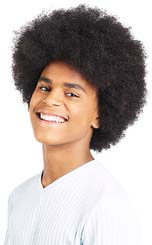|
Intermix.org.uk is a website for the benefit
of mixed-race families, individuals and anyone who feels they have a multiracial
identity and want to join us. Our mission is to offer a view of the mixed-race experience, highlighting icons, film, books, poetry, parenting techniques, celebrities, real lives and much more. Our online forums are a great place to meet others, ask questions, voice your opinions and keep in touch. Sign up for our monthly newsletter and delve into our pages. Want to join in? Become an Intermix member to take part: |
Assimilation And Mixed-Race Populations
Dr D. Emily Hicks

Postcolonialism
I was not born in the UK. However, the story of my mixed ancestry family has a link to Cornwall. My paternal great-grandmother was born in Cornwall. I share with postcolonial families a complex family structure. I have two cousins living in New Zealand. One met her first husband, who was born in London, while she attended art school, and they lived in Leicester. The other was born into a British family that had been in New Zealand for generations. Many postcolonial families have members living in the UK.
Usually, Americans are not considered to be 'postcolonials,' in the way that someone from India or an ex-colony is. I have a different perspective. I think it is useful to consider the Cornish diaspora of mining families, especially those who came to California during the Gold Rush, in relation to mixed race populations; some Cornish descendants married into mixed ancestry populations. This happened in my family.
I also think it is useful to look at the effects of assimilation on these families. Based on my personal experience as one of mixed ancestry and as a parent of a bicultural child, I am wary of assimilation. I look at these issues in relation to hip hop: the richer and more complex the mix, the better.
Melungeons
I am Melungeon. Melungeons are a non-white group of intermarried families of African American, Native American Scots-Irish, Muslim and Sephardic descent who lived in relatively isolated communities in the southeastern United States. Thanks to the effectiveness of the processes of assimilation, I was raised "white." I married a dark-skinned Mexican man. I chose to raise my son so that he would know his Mexican father's culture. Now, I realize that both my son and I are mixed race.
A mixed family
My son's father was raised in Mexico. My son spent nearly every holiday and near all summer vacations with his paternal grandmother in Mexico City. He was raised to speak Spanish and English. Now that he is in college, in California, he has chosen to live in the residence hall for international students.
My son, his father and I look so different from each other that once, while we were eating in a restaurant in San Diego, a city located on the U.S.-Mexico border, a patron of the restaurant called the police. This person had overheard our conversation about travel plans for our son's holiday, and had decided that my son's father and I had kidnapped 'a child.' After we all left the restaurant, my son and his father left in one car and I drove home by myself.
Unbeknownst to my son's father and my son, they were being followed by the police. They arrived at the home of a family friend only to be met by police cars; a police helicopter was flying overhead. After a heated discussion, the police realized their error.
Incidents like this have occurred on a regular basis throughout my son's life. These experiences have resulted in his clear understanding that he and his family are different; without such experiences, perhaps he would have assimilated into 'white' culture completely, instead of only partially.
Ancestry
I learned the truth about my ancestry recently. In the generation of my great-grandparents, it was decided, among some families within Melungeon communities, not to tell children about their mixed ancestry. This decision was made in response to the activities of the Klu Klux Klan. My mother told me that she was Scots-Irish and Sicilian. She was raised not knowing that she was Melungeon. She has light skin, and she has always passed as 'white.'
Upon trying to find out more about my mother's Scots-Irish family, I discovered that I was in fact Melungeon, one of two hundred mixed ancestry populations in the United States. Melungeon communities may have begun forming in the New World as early as the 1540s.
I never fit into the dominant white culture. Like many of Italian, and especially Sicilian, descent in the United States who live on the West Coast, I tried to blend into the Latina/o community; this community was often connected to Pacific Islander, Caribbean and other non-white communities.
My ancestor Rev. Benjamin Doggett, who received his MA from St. Johns, Cambridge, came to America in the 1650s. A generation earlier, a Huguenot-Wallon, Hester Le Mahieu, and her husband, Francis Cooke, had come on the Mayflower. Many 'old white Virginia families claim Pocahontas as an ancestor, as well as many Melungeons.
The physical appearances of Melungeons vary greatly. Despite my light olive complexion, under the Virginia Racial Integrity Act, I would not have been considered white in 1924, especially since my family names were listed on Walter Plecker's list of those who were in his view trying to pass as white when they were in fact, in his view, 'free mulatto': Doggetts, Goings, Hawkins and Cooper.
How did the descendants of Rev. Doggett end up being 'free mulattos'? In addition to the factors of slavery, colonialism and racism, the same families chose to intermarry for over ten generations. For hundreds of years, my Melungeon forbears lived in southern Appalachia, in Louisa County, Virginia, North and South Carolina and northern Alabama. Eventually, some went on the forced migration of the Trail of Tears and many migrated to Oklahoma and Texas. Although many of the names appear to be English, German or Scottish (or Scots-Irish as they are called in the United States), these names appear in Melungeon and Cherokee communities: Chambers, Ross and Stewart.
Conclusion
Due to intermarriage, the mining families of Cornwall share a history with mixed ancestry communities in the United States. In my case, the "mix" is even more complex because I married a Mexican man.
My son has light skin, speaks perfect Spanish, eats wholewheat tortillas and may secretly believes that Tupac is alive.
His generation, thanks to hip hop, is able to create and to maintain complex cultural identities. Hip hop culture appropriates and transforms strands within the dominant culture without completly assimilating into it.
This paper was first submitted as part of the e-conference mixedness and mixing 4-6 September 2007.
